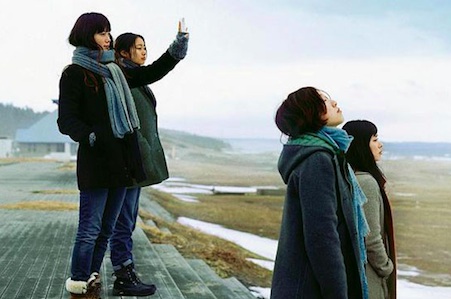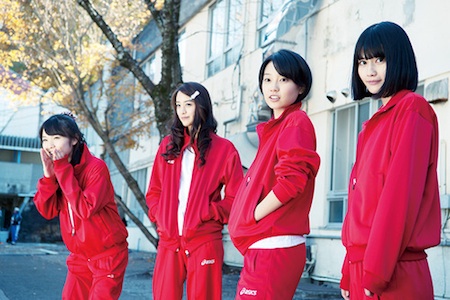
Though now in its thirty-seventh iteration, the two-week, 300-film Hong Kong International Film Festival often feels like an impromptu, utterly unpretentious cineparty strewn across eight locations on Hong Kong Island and the Kowloon peninsula. Elsewhere, at Cannes, Vancouver, Los Angeles’s AFI Fest, crusty film critics, liberal retirees and hipster wannabe filmmakers dominate audience demographics. Here, refreshingly, two-thirds of the yearly 80,000 or so fest-goers look to be in their twenties, half of those, students. Good news for the future of cinema.
The 2013 edition confirms HKIFF’s rep. Strong in Asian cinema, it’s the longest running international festival in Asia, the first anywhere to have dedicated a section to new Asian cinema, and the host of the Asian Film Awards. Lots of world premieres from name directors; a Hong Kong Panorama; series of new Mainland and Taiwanese films; an eleven-film Andrew Lau tribute; documentary, avant-garde, “Indie Power” and animation sections; three young cinema competitions; a program called “The Cinematic Matrix of Golden Harvest” featuring 58 films from 1971–1989 produced by one of Hong Kong’s most innovative mini-studios; a selection of Kinoshita Keisuke titles; et cetera; all this in addition to the most recent Cannes, Venice and Berlin highlights; Latin American and Swedish sidebars; eight restored classics; and a James Broughton [!] retro. Everything from the saccharine but crowd-pleasing tale of HK’s rival B-boy troupes (The Way We Dance) to the graphic documentation of a queer performance artist’s shockingly transformational plastic surgeries (Philomirrophobia I & II).

The fest’s first four days had a strong Japanese flavor. What follows are thoughts on three of the highlights, beginning with The Kirishima Thing, in which a top prep school comes apart at the seams when the eponymous (but unseen) academic-athletic-artistic star turns up absent the day of a critical volleyball match. Rumors swirl he’s dropped out of his after-school activities, and neither his best friend, Hiroshi, nor his GF, Risa, knows what’s up‑Kirishima’s not returning texts! Director Yoshida Daihachi, whose quirky début, Funuke, Show Some Love, You Losers! I’d admired at the 2007 Cannes Critics’ Week, pulls off a couple complex formal feats with this new film. First, working from Asai Ryo’s novel together with co-writer Kiyasu Kohei, he not only maps out the school’s intricate, artificial social hierarchies—the band, various sports teams, the film society, the “go-home-early” club, and others battle it out here not just for status but quite literally for space—but also fingers their shared, but tenuous assumptions about excellence which, when they vanish à la Kirishima, leave former friends bickering and enemies … well, let’s just say that Yoshida’s climax, in which volleyball jocks invade the school rooftop where nerdy student filmmakers are staging a zombie apocalyse while the girls’ wind ensemble belts about the bridal procession from Wagner’s Lohengrin, is a wacked-out tour de force. Second, Yoshida’s team cleverly mirrors the subtle re-alignments that result from the crumbling of the school’s social structure by repeatedly cycling through the same day’s materials, each time with different emphases, shifting POVs. (The film, appropriately enough, won the AFA editing prize, following a slew of honors, including Best Picture, at the recent Japanese Academy Awards.)
No surprise Hong Kong nabbed the premiere of Ishii Yuya’s The Great Passage. In 2008, the HKIFF fêted a then 24-year-old, bushy-haired Ishii, screening his first four features (Bare-Assed Japan, Jiro’s Love, Girl Sparks and Of Monster Mode) and conferring on him the Edward Yang New Talent Award. Ishii showed up at the 2010 fest with To Walk Beside Her and Sawako Decides; he was here again last year with Mitsuko Delivers. Structurally, The Great Passage apes those corny sports flicks in which an alcoholic and/or otherwise disgraced coach rallies, over the course of a couple months max, a ragtag band of not-so-talented and/or underachieving outsiders to literal and/or psychological victory. (See The Bad News Bears, or, I don’t know, Iron Ladies 2.) But here, instead of mastering the head-first slide or the perfect spike, the misfits publish a dictionary—yes! Dictionary—whose fifteen-year editorial history, from word collection to a fifth round of proofreading the quarter million entries, the film surprisingly diligently chronicles.
A colleague described The Great Passage as “gently oddball”, which pretty much encapsulates the film’s basic fishless-fowlless-ness. It’s Ishii Light, mainstreamed Ishii—the first of the director’s films he didn’t write, the first distributed by a “major,” Shochiku, and the first with certified stars (Odagiri Jo, Matsuda Ryuhei, Miyazaki Aoi). To be sure, The Great Passage should delight all those, myself most definitely among them, for whom a little textual criticism remains legitimate Friday night excitement. And the tear-jerking triumph-of-teamwork formula works here to full effect. But the twenty-nin-year-old’s gently oddball film, generic in its big-studio design and lighting as well as in its professional but conventional performances, sadly already lacks the 24-year-old’s energy, his edge.
Like the soap bubble drifting through the air, ‘Petal Dance’ rivets. Like the ether spilled on a stone gray counter, the film doesn’t so much end as evaporate off the screen.
I‘d seen veteran commercial director Ishikawa Hiroshi’s second feature, Su-ki-da, at my first HKIFF in 2006. That film’s ability, in its clumsy compositions and “rough” editing (Ishikawa shot and cut the film himself), to echo the awkward moments between a boy who seemed to be teaching himself, on screen, right there in front of us, to play the guitar, and the girl who seemed perfectly content waiting for him still haunted me years later. Ishikawa’s third film, Petal Dance, another thirty-seventh HKIFF world premiere, continues in that vein. Two older, but still young women (Ando Sakura, Miyazaki Aoi again), maybe six years out of college, enlist a recent aquaintance to drive a borrowed, beat-up old car through the snowy north to the hospital where another former classmate is recovering from what they all fear was probably not an “accident.”
Of course, what makes Petal Dance so memorable is not this wafer thin plot—and, thankfully, Ishikawa’s not one to go in for melodramatic third-act revelations—but the washed-out, blue-gray, overcast sky, the aimless, floating camera, the underpass, the gliderport, the baseball field in the middle of nowhere, the silence and the playful glances between a young woman and her still friendly ex, the wintry condensation running down a window pan, the wish that the ones you’ve loved, wherever they are, “are alive … and smiling”. Like the soap bubble drifting through the air, Petal Dance rivets. Like the ether spilled on a stone gray counter, the film doesn’t so much end as evaporate off the screen.



